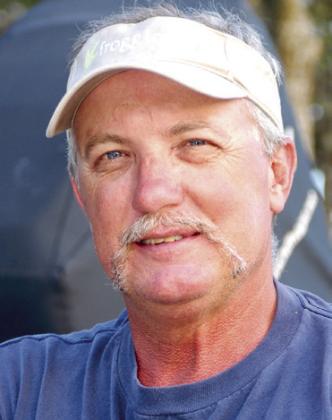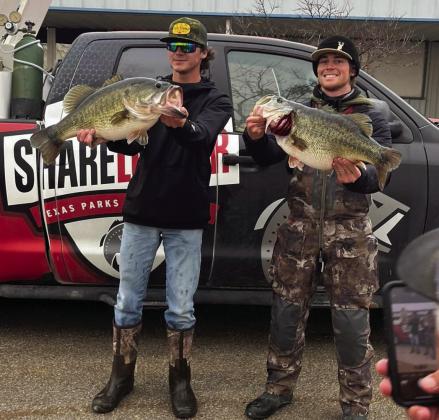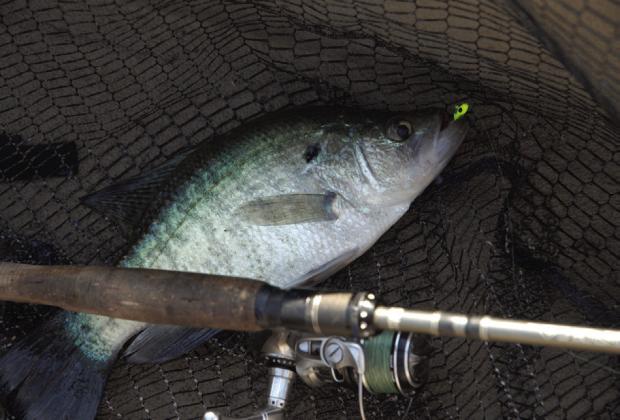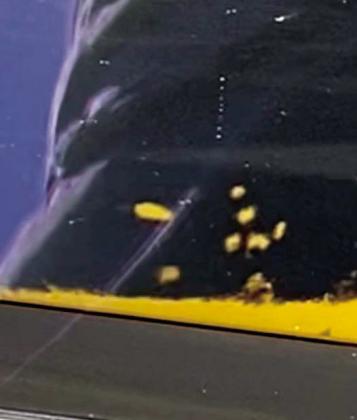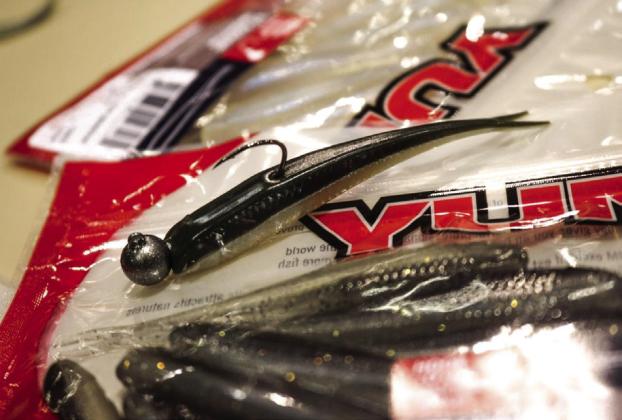Like it or not, forward-facing sonar is here to stay
Anyone who spends much time fishing these days is sure to have an opinion on forward-facing sonar. Like it or not, the technology is here to stay — at least until something better comes along. It has given fishermen eyes beneath the water like none they have ever had before.
It would be reaching to say modern anglers would be lost without their Garmin Panoptix LiveScope, Lowrance ActiveTarget Live and Humminbird MEGA Live Imaging units, but many might feel handicapped if their toys were taken away.
They may not catch near as many fish, either. At least not in the places, with the ease and in the manner that forward-facing sonar has made possible. It has truly changed the face of fishing, particularly in bass and crappie arenas.
For those who may not know, FFS is way different from traditional sonar 2D, SideScan and DownScan. It operates using a special transducer, usually mounted to the trolling motor shaft.
The transducer records real-time imagery of what is going on in the water column around the boat. The data transmits to the electronics screen for display in super crisp detail.
The technology doesn’t come cheap, but plenty of anglers have taken the financial leap.
One of the many benefits FFS junkies always chatter about is it helps them to see cover and fish — suspended or on bottom — from a considerable distance. Another is it helps them make precise bait presentations to fish and, more importantly, see how they react as a bait moves through the water column.
Gone are the days of blind casting to potential sweet spots to see if anyone is at home. FFS usually leaves little question as to whether or not fish are present. If the fish move, anglers can quickly adjust and hound them with different baits until they bite.
Or at least they can try. The general belief early on was technology opened the door for targeting previously uncharted waters occupied by suspended fish that were pretty much unmolested. That’s hardly the case anymore.
FFS is all the rage these days. Likewise, finding those really dumb fish away from the bank isn’t near as easy as it once was, especially on heavily pressured water. Many of the fish have gotten smart to it.
Anglers have gotten pretty crafty, too. Some are so skilled with the technology they can a determine the mood of a fish by how it reacts to the lure, and identify the size of the fish before a cast is made. The bigger the blob on the screen, the bigger the fish.
Blessing or Nemesis
Some critics of the technology have compared using FFS to hunting deer behind high fence with a spot light.
I don’t know about all of that. Though it does provide a wealth of advantages that previously did not exist, FFS is not bolt-on success. Far from it.
Think of it like video game fishing. It takes time and a wealth of patience to become proficient with it, and there are a long list of variables that are forever changing to contend with.
Some guys catch on quickly. Others get frustrated and never do. It’s been a blessing for some anglers. A curse for others.
Can you still catch fish without it? Most certainly. Like everything else in the boat, forward sonar is a tool. And more and more anglers are making the decision that it is a tool they had rather not be without.
Deadly on Crappie
Armies of crappie fishermen swear by it.
Crappie are the third most sought after freshwater fish in Texas behind bass and catfish. They live most of their lives suspended in the water column over deep water. The fish are prone to gather in large schools, often in relation to brush piles, bridges, standing timber or around docks.
Crappie anglers have historically dunked baits around potential sweet spots with a hope and a prayer, and caught plenty of fish doing it.
Forward sonar eliminates a lot of the guesswork. It helps anglers pinpoint schools of fish others may not have messed with while providing intel about the size of the group. Better yet, it allows for following fish if they move left, right or tuck tail and run. Most will agree it helps fill limits more consistently, and in shorter order than before.
A Big Bass Frenzy
The technology has been a huge hit with the bass guys, too. Lure companies are feeding off the frenzy by tempting anglers with new baits that wear signature names. Bill Lewis recently introduced a new jerk bait called the Scope-Stik; YUM, the FF Sonar Minnow; and Heddon, the Sonar Blade Bait.
The growing popularity in bass fishing circles is built largely around the success anglers have had scoping up big catches in tournaments. In 2022, Texas bass pro Kyle Hall of Granbury used it to sack up $425,000 over a 10-month period competing in Major League Fishing events.
Locally, Hall is among the budding number of anglers to witness big bass nirvana at Lake O.H. Ivie in West Texas. The young angler says he has scoped up more than a dozen bass over 10 pounds since February 2022. The biggest was a 16.10 pound Toyota ShareLunker that slammed his Alabama rig last March. The heavyweight ranks No. 21 on Texas’ Top 50 list.
Hall was up to his old tricks on January 24. Fishing alone on ‘Ivie, he spotted a pair of big fish finning around over deep water. He tempted them with a Shane’s Baits umbrella rig armed with 6th Sense swim baits. Amazingly, both fish nailed the rig simultaneously. He saw the whole deal unfold in real time. One was 8 pounder, the other close to 10.
“It was crazy,” Hall said. “I didn’t know what I had for a minute, but they didn’t fight as hard as you might think. They were fighting against each other harder than they were fighting against me.”
Hall was back at it on January 30, when he scoped up his second Toyota Legacy Lunker in less than a year — a 13.58 pounder. He said he watched the giant eat a 6th Sense swim jig over about 40 feet of water.
Oklahoma angler Josh Jones has done plenty for popularizing forward sonar, largely through his presence on social media. He has more than 150,000 Facebook followers.
Jones recently decided to relocate to Texas to be closer the state’s great bass fishing. He charges $2,000 per day for January/February instructional guide trips on ‘Ivie, and claims he is getting it.
Interestingly, Jones is a hardcore crappie fisherman and self-taught FFS expert who was a virtual unknown to Texas’ bass fishing fraternity until he started rattling cages at O.H. Ivie in February 2021.
Today, he owns the distinction of the having more Legacy Class Toyota ShareLunkers (4) to his credit than any other angler. All were caught from ‘Ivie using FFS in deep water to guide the way.
Jones is so dialed in with his electronics the he claims to know when he’s looking at a fish over 13 pounds. On January 25, he posted an electronics screenshot that shows what appears to be several large fish finning around. One of the fish is significantly bigger than the others.
The photo caption reads: “This is what a potential 18+ Texas state record bass looks like compared to a school of 8-10 pounders. I had this fish hooked and it got me in a tree.”
Jones and Hall aren’t the only out-of-staters to scope up multiple Toyota ShareLunkers at O.H. Ivie. In December, Kentucky fishing guide Dalton Smith made his first visit to the Texas lake and boated a pair of 14 pounders less than three hours part, both on spinning gear.
It was a life-changing experience for the young angler. He moved to Texas less than a week later. He’s been guiding for giants on O.H. Ivie ever since.
Amazingly, Smith caught a third 14 pounder on February 2. The guide said he actually located the fish a couple of weeks earlier. It was relating to a submerged tree on the main lake.
Smith said one of his clients had the opportunity to catch the fish but failed. “I actually saw it eat his bait but he didn’t get a hook in it,” he said.”
Smith fooled the big bass fish days later with an umbrella rig. The 14.76 pounder was subsequently put it on loan to Texas Parks and Wildlife’s Toyota ShareLunker program.
The big ones were apparently biting pretty good on the heels of Texas’ latest ice storm. Caden Cowan of Stephenville boated an ’Ivie 13.31 pounder and Jones reported catching seven fish over 10 pounds, also on February 2.
Two more Toyota ShareLunkers were turned in at the lake before the weekend was up, and another was caught February 9. As of February 10, the 2023 Legacy Lunker counts was at eight. Seven of them were caught using FFS.
--------------- Matt Williams is a freelance writer based in Nacogdoches. He can be reached by e-mail, mattwillwrite4u@yahoo.com.
The Great Outdoors by MATT WILLIAMS Outdoors Writer


